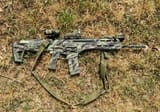>>64389673
Okay /arg/, time to dunk on the sacred cow.
2 MOA dot ≠ miracle. Sure it’s tidy on paper, but for anything past “bench-zero” the tiny dot becomes useless compared to a properly tuned 3–6 MOA on a real CQB optic when you need speed over pin‑point precision. You paid Aimpoint tax for a dot size that only impresses people in spreadsheets.
Aimpoint
Battery life flex is marketing theater. “50,000 hours” sounds sexy until you realize that’s on a mid‑setting in lab conditions with a CR2032 — not reality after you slam it on a carbine, chuck it in molle, or actually use the bright settings. Also, replaceable coin cells = fiddly in the cold. Real durability isn’t measured in PR-friendly numbers.
optik-pro.de
+1
Ruggedness myth — overpriced metal with a logo. It’s durable, yes, but you’re paying Aimpoint-level premium for something that competitors now match at half the price. People act like the T‑2 is indestructible; it’s not invincible, and you can break/strip mounts and battery caps like any other optic if you aren’t delicate.
aimpoint.com
+1
Parallax/clarity cult. Aimpoint pushes “parallax free” and “optical clarity” like gospel. In practice you still get weird dot behavior off-center and quirks under different light conditions — enough to make a picky shooter raise an eyebrow. The coatings are good, but optics are optics.
Aimpoint
Bottom line: the Micro T‑2 is a great optic if your goal is to flex “I have an Aimpoint,” or you need a proven manufacturer for duty kit. If your goal is the best value, best feature set, or maximum practicality per dollar, there are modern alternatives that either match or exceed it for less.
I know what you’re about to type: “You don’t understand X,” “You’re broke,” “You’ll never replace Aimpoint,” etc. Drop your “You”s now — argue like it matters.





